I've told you many times about prefabricated wooden houses and their advantages. In order to bring credible arguments in favor of this type of houses, we talked to owners and visited several houses built on wood panel structures. They are all very happy with their houses and say that would never build otherwise. The most frequently cited argument was the short working time on site. We are all used to building sites that take years, with large crews and a lot of waste, and when we are told that a large, multi-storey house can be erected and roofed in less than a month we are tempted to think that this is at least an exaggeration. Story house built by Dimmer in the south of France proves that this is no exaggeration but a common way of building with wood.

In Gordes, a famous town close to the Mediterranean and the Côte d'Azur
Despite being just a commune of just over 2000 inhabitants, Gordes is known beyond the borders of France. Situated in the Provence-Alpes-Côte d'Azur region, it is a tourist destination appreciated not only for its beauty and proximity to the Mediterranean but also for its history. Lucky visitors to the area discover a castle rebuilt during the Renaissance or an ancient village with houses made entirely of stone. During the Second World War this was a French Resistance stronghold and the commune was awarded the Croix de Guerre for the heroism and sacrifice of its inhabitants. Rebuilt after the war, it became an attraction for artists, Marc Chagall being one of the best-known painters to have created here. The area is hilly, with olive groves and vineyards, which attracted movie producers. The region has been the backdrop for a number of movies including Ridley Scott's A Good Year, which I never tire of re-watching.
But back to houses. All this notoriety comes with rules that must be strictly adhered to in order to build here. The houses must blend perfectly into the landscape, only earth colors (ochre) and stone are allowed for the finishing of the houses, and the roof must be made of burnt earth tiles. The land cannot be enclosed by wooden fences but only by stone, and alleyways, called calade, it is all covered with stone. To comply with the rules, most of the buildings are built with stone, as they were in the past.
However, the owners of the house we are talking about decided to build it from prefabricated wooden structures. Convinced by the energy efficiency of these houses, impressed by the speed of construction and dreaming of a healthy indoor climate, they chose to build a wooden house.
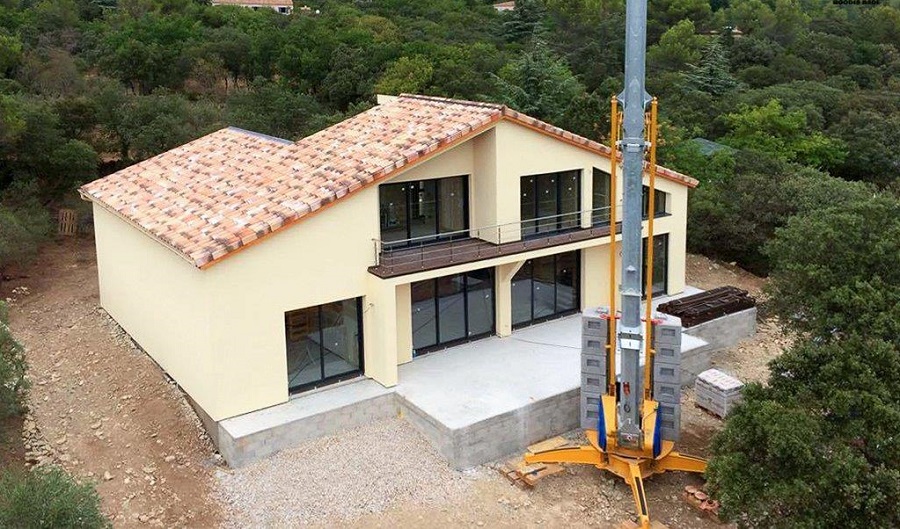
House around the olive trees
The plot of land on which the house was to be built stretched on a hill overlooking the Mediterranean. In the middle of the plot there were two olive trees very close to each other, seemingly grown from the same root. The owners wanted to keep them and the house was designed and built to include the two olive trees.
The house, with a 162 m² ground floor, a 93 m² first floor and 143 m² of landscaped terraces, was designed so that the olive trees are in the middle. There are three buildings enclosing an inner courtyard 'paved' with wood, in the middle of which are the trees. The house has a central body, from which two other bodies lead off to the rear on either side. One of the buildings has a shorter storey, making it possible to create a terrace from which you can enjoy the olive tree crown. The design follows the Provençal house model, with large, bright windows and tall, glazed doors opening generously onto the terrace.
The elements of the house - walls, floorboards, wooden frame - were built in the Dimmer factory in Comănești. Being a spacious house it took 6 weeks to build all the elements. The wood was cut and dried in the factory. After stratification and the necessary mechanical processing of the joints, the wood was treated with fire-retardant and insect-fungic substances by immersion. Basaltic wool was installed in the frames built for the walls. Finally, all the elements were packed and transported to the site in France.
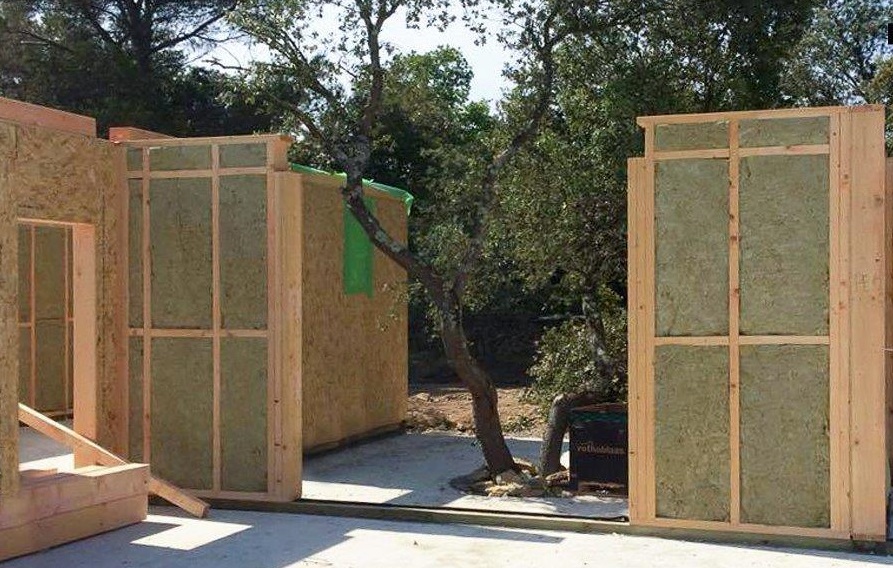

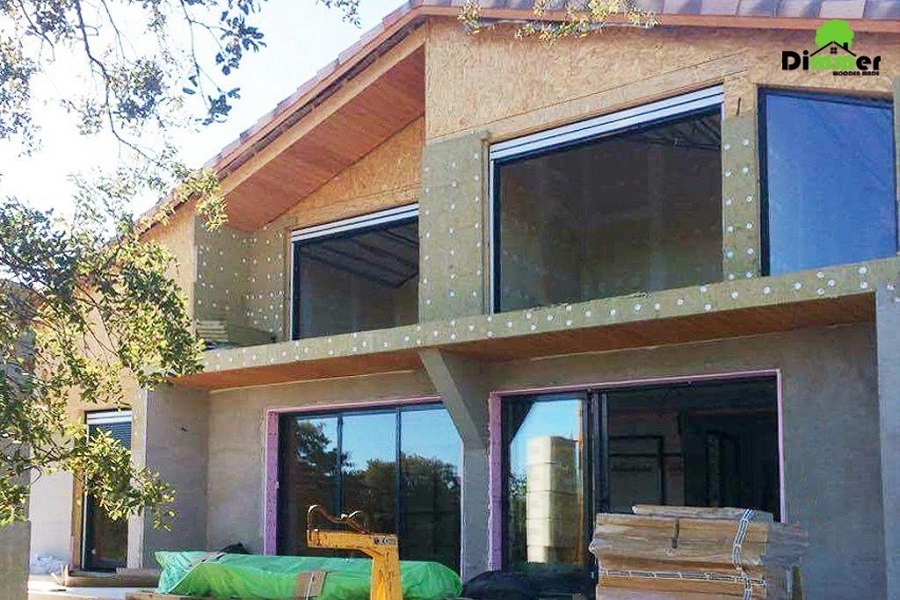
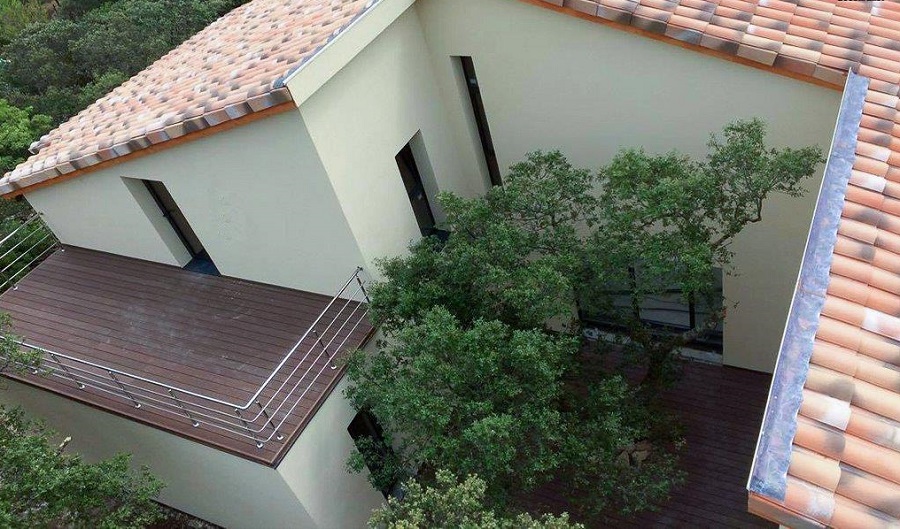
Because they worked fast and well, they'll be back
Work on the site began in May with the pouring of the foundation. Across the road was another site for a stone house, started a year ago. After the time needed to harden the concrete, work began to install the elements of the house. Assembling the house and roofing it took less than a month. Basically, in 3 months, including the time in the factory, the house was ready "in the red". Short working time on site is due precisely to prefabrication in the factory. The higher the degree of prefabrication, the shorter the time spent on site.
Work continued on the interior with electrical, heating and plumbing, plastering and finishing the walls. The exterior of the house was clad with 100 mm thick basaltic wool thermosystem, which was then plastered and painted. A color specific to the area was chosen and the house blends perfectly into the local landscape. Looking at it now, only the owners and those involved in the design and construction can still call it a wooden house. Everything was completed in October and the owners moved in in November. Work on the building site across the road was going on and continued after the Dimmer team left.
Six months after the move, when the owners met again with Dimmer representatives, work was still going on at the site next door. They returned to France at the request of the owners' daughter, who was very pleased with the house and the speed with which it was built. She decided she wanted a similar one - prefabricated structures - made by the same builders. And so they got another contract to start this spring. The pandemic delayed it a bit, but didn't stop it. Work on the factory will start soon, and on the construction site as soon as possible. Dimmer has promised to keep us up to date as events unfold. We await information and photos from the scene.
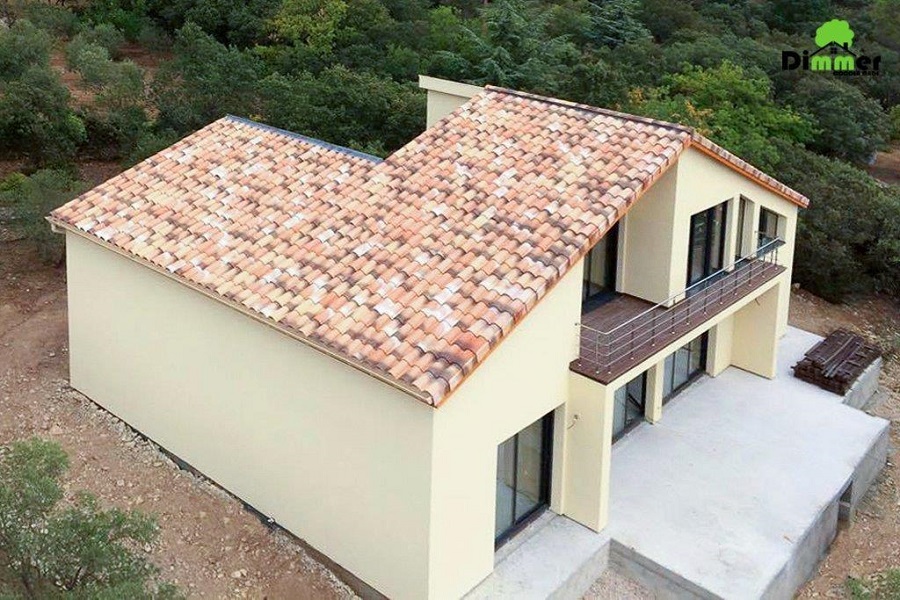

























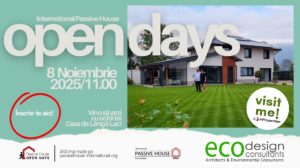


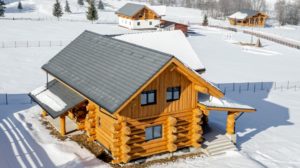
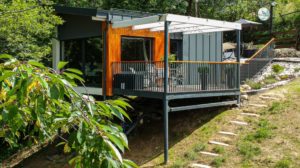


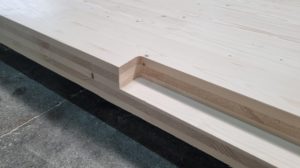



Add comment